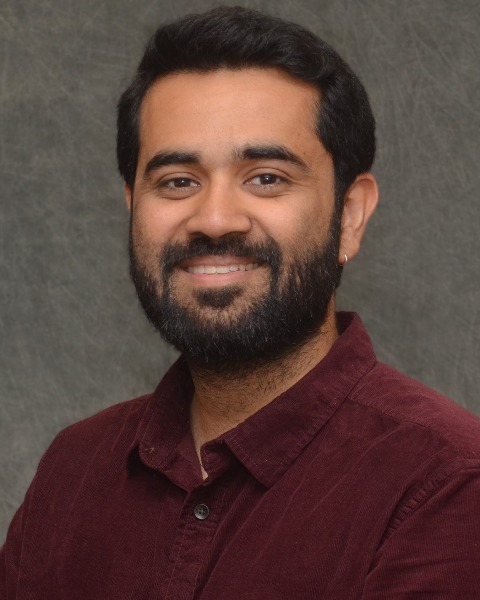Pediatrics (P)
PP1115 - Treatment Trends in Pediatric Single-Sided Deafness: A Retrospective Chart Review
- ML
Melanie Lutz, AuD (she/her/hers)
Clinical Audiologist
UPMC Children's Hospital of Pittsburgh
University of Pittsburgh , PennsylvaniaDisclosure(s): No financial or nonfinancial relationships to disclose.

Aravind Parthasarathy, PhD
Assistant Professor
University of PittsburghDisclosure(s): No financial or nonfinancial relationships to disclose.
- NC
Nicole E. Corbin, PhD (she/her/hers)
Scientist
Boys Town National Research Hospital
Omaha, NebraskaDisclosure(s): Boys Town National Research Hospital: Employment (Ongoing), Grant/Research Support (Ongoing); Pennsylvania Lions Hearing Research Foundation: Grant/Research Support (Terminated, June 30, 2023); University of Pittsburgh: Employment (Ongoing), Other Research Support (Ongoing), Research Grant (includes principal investigator, collaborator or consultant and pending grants as well as grants already received) (Ongoing)
- CH
Courtney Hannigan
Disclosure(s): No financial or nonfinancial relationships to disclose.
Lead Presenter(s)
Contributor (Not Presenting)(s)
Single sided deafness (SSD) describes a unilateral severe to profound hearing loss with normal hearing in the contralateral ear. Due to output limitations of traditional amplification, and no clear best practice option, patients with SSD may be treated with a CROS system, a bone anchored hearing device, or a cochlear implant. Additionally, these patients may choose to forgo amplification and audiologically monitor the normal hearing ear. This poster will review the clinical presentation, treatment selection, and audiologic outcomes for a subset of children with SSD treated at The UPMC Children’s Hospital of Pittsburgh.
Summary:
Although patients with SSD have normal hearing in one ear, their unilateral hearing loss (UHL) may negatively impact sound localization, speech understanding in the presence of background noise, and listening effort (Bess and Tharpe et al., 1986; Sangen et al., 2017). At this time, there is no single best practice recommendation for the treatment of pediatric SSD. Patients and their families are typically presented with treatment options including a contralateral routing of sound (CROS) system, a bone anchored hearing device (BAHD), and a cochlear implant (CI). The use of CI for children with SSD was first approved by the Food and Drug Administration (FDA) in 2019, although not every SSD patient will be a candidate for unilateral CI for SSD due to anatomical contraindications such as cochlear nerve deficiency (Dewyer et al, 2022).
The ambiguity of treatment options for pediatric SSD patients often leads to difficult decisions for patient families as well as managing audiologists. A dearth of research examining outcomes for SSD patients based on their treatment method selection prompted the creation of this research project. Our team was given access to a subset of pediatric SSD patients treated at the UPMC Children’s Hospital of Pittsburgh. Initially 100 patients were identified. Five of these patients were excluded as their hearing loss was later found to be bilateral or a conductive component was recorded in subsequent audiograms.
A retrospective chart review was completed and examined details on clinical presentation, age of diagnosis, treatment selection including specific device type, and audiometric data pre and post device dispense. Our data also includes genetic results, imaging results, and educational accommodations if applicable.
To improve care for pediatric patients with SSD, more research in this area is needed. Our research seeks to identify trends in audiologic outcomes for a subset of SSD patients treated at one clinic site.
Resources:
Bess FH, Tharpe AM, Gibler AM. Auditory performance in children with unilateral sensorineural hearing loss. Ear and Hearing 1986;7(1):20-6
Dewyer, N. A., Smith, S., Herrmann, B., Reinshagen, K. L., & Lee, D. J. (2022). Pediatric single-sided deafness: a review of prevalence, radiologic findings, and cochlear implant candidacy. Annals of Otolaryngology, Rhinology & Laryngology, 131(3), 233-238.
Sangen A, Royackers L, Desloovere C, et al. Single-sided deafness affects language and auditory development – a case-control study. Clinical Otolaryngology 2017; 42(5):979-87
Learning Objectives:
- Describe trends in treatment selection and outcomes for pediatric single-sided deafness patients managed at a major pediatric hospital audiology clinic.
- List common etiologies of pediatric single-sided deafness.
- Identify areas of need for future research in the management of pediatric single-sided deafness.
